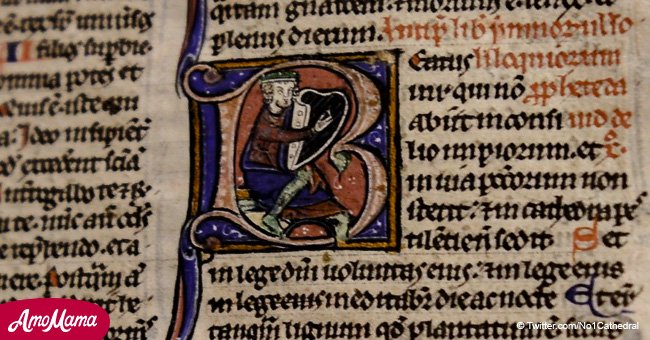
Extremely rare medieval Bible found 500 years after it disappeared
A rare medieval Bible has found its way back to its rightful place at the Canterbury Cathedral. The book had disappeared 5 centuries ago.
In July it was purchased at auction from a private seller at a specialist sale of manuscripts in London. According to Canterbury Cathedral, the Bible will be on display to the public.
The medieval Bible disappeared from the Cathedral’s monastic book collection at the time of the Reformation. This was when the Church of England split from the authority of the Pope and the Roman Catholic Church.
Canterbury Cathedral’s monastic community was disbanded during the Reformation. Most of the books in its library were dispersed, destroyed, or taken apart for reuse.
For more on this story go to our Twitter account @amomama_usa. Further investigation into its disappearance will be done as experts aren’t sure exactly what happened to it.
The Bible was written in the late 13th century and is now known as the Lyghfield Bible. It was named after the 16th- century Canterbury Cathedral monk who once owned it.
“Not only an incredibly rare book directly linked to one the most turbulent periods of British history, the Lyghfield Bible is also exquisitely beautiful. We at the National Heritage Memorial Fund agreed it was imperative it should be saved for the nation and returned home to Canterbury where its important story can be told to future generations of visitors, pilgrims and students.”
Sir Peter Luff, Chair of NHMF, Canterbury Cathedral, July 31, 2018
The 690-leaf volume was written on parchment or vellum, which was made from animal skin. Its pages are described as almost “tissue-like” in quality.
The Bible was written in Latin script and was probably produced in Paris. It also features intricate decorations on its pages.
The Bible is pocket-sized and was designed for personal use, possibly whilst travelling. It was purchased for $129,416.
The UK’s National Heritage Memorial Fund contributed $124,240 toward the purchase and additional funding was received from the Friends of the National Galleries, the Friends of Canterbury Cathedral, and a private donation.
The Lyghfield Bible is one of about 30 books that survived from the Cathedral’s pre-Reformation Library. The library once held thousands of volumes.
The book is the only complete Bible from the medieval book collection which is now at the Cathedral. It forms part of a collection which is inscribed on the UNESCO UK Memory of the World Register.
The Cathedral has planned to display the Bible in the new exhibition area which is being developed as part of The Canterbury Journey project. Canterbury Cathedral Head of Archives and Library Cressida Williams shared how grateful they were for the support from funders.
“It is of the utmost significance to us to have here in our collections a copy of the core Christian text which was owned by one of the last monks of the medieval monastic community,” Williams said.
She added that the Bible bore witness to the upheavals of the Reformation. Williams stated that this was “a time which defined what the Cathedral is today, and will have a key role in telling visitors our story.”
